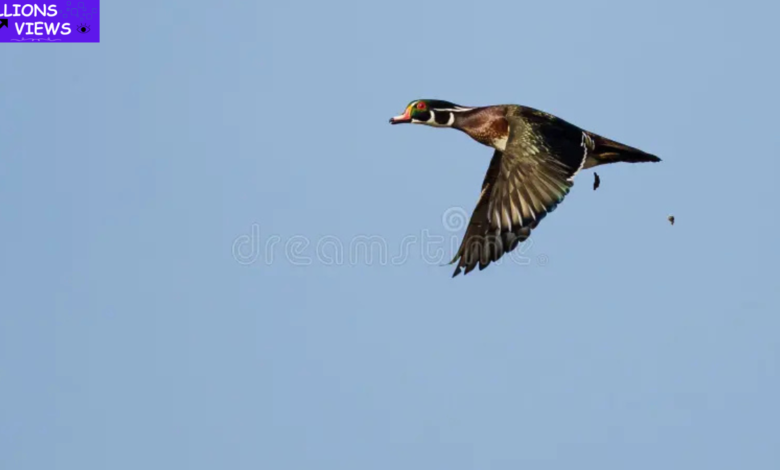Wood Ducks Poop: Understanding the Fascinating Digestive System of Wood Ducks

wood ducks poop are one of the most beautiful and intriguing species of waterfowl found in North America. They are often admired for their stunning plumage and their ability to live in wooded wetlands. However, much like any other animal, wood ducks have biological functions that might seem less glamorous, such as the process of digestion and, naturally, poop. In this article, we will explore everything you need to know about wood ducks poop, including their digestive system, how they contribute to their environment, and why understanding this topic is essential.
Introduction to Wood Ducks

Before diving into the details of wood ducks poop, it’s helpful to understand a bit about these fascinating creatures.
What Are Wood Ducks?
Wood ducks (Aix sponsa) are medium-sized perching ducks native to North America. They are known for their vibrant colors, particularly the males, who display iridescent greens, purples, and whites. Wood ducks are also distinguished by their unique nesting habits, often found in tree cavities near freshwater bodies. They are migratory birds, usually found in the eastern and western United States during the warmer months.
Habitat and Behavior
Wood ducks are commonly found in wooded swamps, ponds, and riverine forests. They prefer nesting sites in tree cavities or specially made wooden boxes. During the breeding season, males attract females with impressive displays of plumage and distinctive calls.
The Digestive System of Wood Ducks
Understanding wood ducks’ poop requires a brief overview of their digestive process. Ducks, like all birds, have specialized digestive systems that allow them to process the food they consume efficiently.
What Do Wood Ducks Eat?
Wood ducks are omnivores with a varied diet. Their food choices can include:
- Aquatic plants: Wood ducks often eat seeds, roots, and other plant material found in water.
- Insects and invertebrates: They are known to forage for insects like dragonflies, beetles, and worms.
- Small fish and amphibians: Although rare, wood ducks may eat small fish or amphibians when available.
The diet of a wood duck directly impacts the content of its poop, as it reflects the nutrients they consume from their environment.
How Do Wood Ducks Digest Their Food?
Like other birds, wood ducks have a simple yet efficient digestive system. Here’s a breakdown of the process:
- Beak and Esophagus: Food enters the wood duck’s beak, where it is swallowed and passed down the esophagus.
- Crop: The food is stored temporarily in the crop, a sac-like organ near the bird’s throat, where it begins to soften.
- Stomach: After the crop, the food moves into the stomach. The wood duck has a proventriculus, where digestive enzymes start to break down the food.
- Gizzard: In birds, the gizzard plays a key role in grinding food. Wood ducks ingest small stones or grit that help in grinding food in the gizzard.
- Small Intestine: Nutrients are absorbed as the food moves through the small intestine.
- Large Intestine: Any remaining waste moves to the large intestine, where water is absorbed, and the waste becomes more solid.
- Cloaca: Finally, the waste reaches the cloaca, where it exits the body as a mixture of feces and urine.
The Composition of Wood Ducks Poop
When it comes to wood ducks poop, there are a few key components that contribute to its appearance and consistency.
What Does Wood Duck Poop Look Like?
- Color: Wood ducks’ poop typically appears dark brown or black, especially if they’ve consumed a diet rich in plants and insects. The color can change depending on their diet.
- Consistency: It is usually somewhat solid but may have a slimy texture due to the high moisture content in their diet.
- Odor: Like most bird poop, wood duck droppings have a distinct, somewhat unpleasant odor, which is influenced by their diet and the bacteria in their intestines.
What Does Wood Duck Poop Tell Us?
The appearance and quality of wood duck poop can give us essential insights into the health and diet of these birds. If the poop is unusually runny or has a greenish tint, it could indicate that the duck has consumed too much algae or other non-nutritive food. On the other hand, very hard or dry poop may suggest dehydration or dietary imbalances.
How Wood Ducks Poop Contributes to Their Environment
While wood ducks poop may not be the most glamorous aspect of their lives, it actually plays a vital role in their ecosystems. Here’s how:
Fertilization
Just like other animals, wood ducks contribute organic material to the soil through their droppings. The nutrients in their poop—such as nitrogen, phosphorus, and potassium—act as natural fertilizers, enriching the soil and supporting plant growth. This, in turn, benefits the entire ecosystem, including aquatic plants that serve as food sources for many animals.
Nutrient Cycling
Wood ducks are essential players in the nutrient cycling process. Their poop helps maintain the health of the wetlands they inhabit by returning nutrients to the water and soil. This helps maintain a balance in the local ecosystem, ensuring the survival of various plant and animal species.
Supporting Biodiversity
The presence of wood ducks and their poop also supports biodiversity by promoting the growth of vegetation that other species rely on for food and shelter. Healthy plants and thriving wetland ecosystems, supported by the contributions of wood duck poop, provide habitats for different birds, amphibians, and insects.
Why is Wood Duck Poop Important to Study?
Studying wood ducks poop might seem unusual at first, but it’s an essential aspect of wildlife management and conservation. Here’s why:
Monitoring Bird Health
By studying the droppings of wood ducks, wildlife experts can gain insights into the overall health of the species. Abnormalities in poop—such as changes in consistency or color—can signal potential health problems, diseases, or nutritional deficiencies. This allows researchers to take action to protect these birds and ensure the survival of their populations.
Understanding Ecosystem Health
The health of wood ducks is closely tied to the health of their ecosystems. By analyzing their waste products, researchers can better understand the state of the wetlands they inhabit and monitor changes in water quality, plant life, and biodiversity.
Interesting Facts About Wood Ducks and Their Poop
Let’s dive into some fun and lesser-known facts about wood ducks and their droppings:
- Wood Ducks Have a Special Pooping Position: Unlike many other birds, wood ducks tend to perch and poop from tree branches. This is an adaptation to their arboreal nesting habits.
- Poop as Communication: Some experts believe that bird poop, including that of wood ducks, may also serve as a form of communication. Other ducks may use droppings to identify the presence of other birds in the area.
- Wood Duck Poop is Beneficial for Wetlands: As a natural fertilizer, wood duck poop is particularly valuable in wetlands, where nutrient cycling is essential for sustaining aquatic life.
How Can We Protect Wood Ducks and Their Habitats?
While learning about wood ducks poop may be an interesting study in itself, it also brings attention to the importance of protecting wood ducks and their habitats. Here’s how we can help:
- Preserving Wetlands: Wood ducks thrive in wetlands, so protecting these vital ecosystems is crucial. Wetland preservation helps maintain clean water, supports biodiversity, and ensures that wood ducks and other wildlife can continue to flourish.
- Building Nest Boxes: Providing wood ducks with suitable nesting sites, like tree cavity nest boxes, helps them raise healthy broods.
- Reducing Pollution: Reducing pollution in wetlands and water bodies ensures that wood ducks, as well as other aquatic species, have access to clean, healthy environments.
Conclusion: The Fascinating World of Wood Ducks Poop
From their unique nesting habits to their fascinating digestive systems, wood ducks poop may seem like a small part of their biology, but it plays a massive role in their overall impact on the environment. By understanding how these birds process food, excrete waste, and contribute to the ecosystem, we can appreciate just how valuable they are to the natural world.
So next time you spot a wood duck, remember: every little bit—from their vibrant feathers to their well-crafted poop—helps keep our ecosystems balanced and thriving. And who knows, you might learn something new about these incredible creatures!





